中华龚氏网文化频道,龚鹏程对话海外学者第三十二期:在后现代情境中,被技术统治的人类社会,只有强化交谈、重建沟通伦理,才能获得文化新生的力量。这不是谁的理论,而是每个人都应实践的活动。龚鹏程先生遊走世界,并曾主持过“世界汉学研究中心”。我们会陆续推出“龚鹏程对话海外学者”系列文章,请他对话一些学界有意义的灵魂。范围不局限于汉学,会涉及多种学科。以期深山长谷之水,四面而出。
康拉德·赫思乐(Professor Konrad Hirschler)
康拉德·赫思乐(Professor Konrad Hirschler)
现任德国汉堡大学(University of Hamburg)亚洲与非洲研究所(Asia and Africa Institute)教授、博士生导师。曾在伦敦大学亚非学院(SOAS)学习非洲/亚洲历史,2003年获得博士学位,并先后在阿尔布雷希茨大学和伦敦大学亚非学院担任学术职务。2016年曾在柏林自由大学(Freie Universität Berlin)伊斯兰研究中心担任教授。
对于他的研究,可能国内会比较陌生(因为与我们传统的文献学十分不同),所以我们请他做了一段自述:
在亚非学院东方和非洲研究学院攻读非洲/亚洲历史博士学位期间,我对手稿本身并不感兴趣。我的兴趣是在我的博士后生涯中逐渐发展起来的,当时我对如何书写“中世纪”阅读实践的历史越来越感兴趣。这个问题引出了我的第二本专著《中世纪阿拉伯土地上的文字:阅读实践的社会和文化史》。
然而,我对手写材料真正的迷恋,是在我从事这个项目时,偶然发现了已知最古老的阿拉伯图书馆目录(13世纪的)。这导致了我在英国科学院资助下为我的第三本专著《中世纪大马士革:阿拉伯图书馆中的多元性和多样性》——阿什拉菲亚图书馆目录进行的研究。我的最新著作《中世纪叙利亚图书文化的纪念碑——伊本·阿卜杜勒·哈迪图书馆》(The Library of IbnʿAbd al-Hādī)延续了这一思路,讲述了15世纪学者伊本·阿卜杜勒·哈迪(Ibn’Abd al-Hadi)的一份非常独特的捐赠清单,这是阿拉伯国家1500年前最大的捐赠图书记录。
这最后一本书强烈关注这些(并不特别漂亮)复合手稿的“重要性”(在我加入该中心之前很久,我就从CSMC采用了这个术语)。从某种意义上说,我对阅读实践的兴趣慢慢引导我走上了研究中世纪图书馆和藏书的道路,越来越关注书籍作为实物。因此,回到汉堡,加入CSMC (Centre for the Study of Manuscript Cultures 手稿文化研究中心),以其独特的专注于书面艺术的重要性,从很多方面来说我感觉像回到了家。
我目前的主要图书项目是与我的同事赛义德·阿尔乔马尼的合作项目。该书名为《在中世纪耶路撒冷拥有书籍和保存文献——布尔汉·丁图书馆》,探索了一位来自14世纪耶路撒冷的未成年学者的书架和私人档案。主人公是一个收入微薄的人,他在家乡耶路撒冷担任朗诵者,在日常生活中担任过许多兼职职位,但在他那个时代的编年史中没有留下任何痕迹。然而,他的离世却产生了一系列引人注目的清单和清单。他收集了50多份文件,其中包括一些非常普通的东西,比如结婚文件、离婚文件(他至少离过两次婚)、租金支付、房屋买卖契约、允许他扩建房屋的邻居、他的妻子从他那里买了厨房设备这样他就能负担得起延期的费用了。幸运的是,我们还保存了几份关于处理他的遗产的文件,包括一份他留下的所有财产的清单,这些财产在1387年秋天的一天在耶路撒冷被拍卖掉了。这份名单是一个独特的机会,可以打开一扇大门,进入印刷阶段之前的非精英书刊和纪录片实践,而到目前为止,这些实践基本上是无法被看见的。它讲述了一个关于实物(主要是书籍,但也包括锅碗瓢盆)的故事,一个关于社会抱负和档案重构的故事。
这本书对这一领域做出了三个主要贡献。首先,它扩展了我们所知道的文献藏书的语料库,因为我们所知道的关于中世纪中东地区图书馆和图书所有权的文献很少。这是一个在过去十年才出现的重要研究领域。我的书也是包括我以前写的关于Ashrafiya和Ibn Abd al-Hādī图书馆的书在内的中世纪藏书三部曲的最后一部。我的主要兴趣不是主要从思想史的角度来研究这些图书馆,而是思考这样的实物收藏对那些拥有它们的人、赋予它们的人以及使用它们的人意味着什么。
其次,我们的书讨论了关于(书本式的和实用主义式的)文化程度的辩论。我们认为,到14世纪,书面文字已经成为该地区几乎所有生活领域的中心特征,远远超过了精英阶层。通过在一个具体的案例研究中结合对图书所有权(和图书馆)的分析和对文档使用(和归档)的分析,本书采用了一种独特的方法,超越了该领域中已建立的概念。
最后,该研究的论点不仅集中在书籍和文件上。相反,它还强调在军事和政治精英成员与更广泛的社会成员之间建立庇护关系的社会文化实践。这种观点是对中世纪晚期埃及和叙利亚社会更广泛反思的一部分,特别是对国家作为一个分析范畴的逐渐衰落的反思。
龚鹏程:在六朝时期(公元220年至580年),世系和对书面文件的控制在建立和维持中国的社会等级制度方面发挥了基本作用。类似的情况是否发生在阿拉伯世界?请问文化权力在中世纪的阿拉伯世界里是如何发挥作用的?
康拉德·赫思乐:龚教授,您好。毫无疑问,对书面文件的控制是建立、维持和谈判社会等级制度的一个关键因素。然而,现代对档案一词的理解及其与现代民族国家的联系,有时导致了对谁、为了什么目的控制文件的概念过于简单化。特别是,历史学家倾向于在这方面赋予一个核心的,甚至是垄断的角色。中世纪的阿拉伯社会在经济、税收、产权、婚姻等领域产生了大量的文件,大量的文件被保存下来。
然而,文件不一定由一个国家控制,而是保存在社会的多个地点。因此,我们发现,个人、家庭和捐赠组织在保存文件方面至关重要,以便主张、维持或挑战社会等级制度。即使是在行使政治权力过程中产生的文件(命令、税收收据、信笺等),也是由个别行政人员和高级官员保存的,而不是集中的档案。正如一位同事最近为早期现代印度所做的论证,莫卧儿王朝的档案只是“在家里”。
因此,文件的控制是一种分散的做法,发生在社会中的许多社会场所。这正是研究这些文件如此迷人的原因。我们看到的不是福柯式的国家对知识生产和保存的全面控制,而是一个不断竞争的行动者网络。文件保存的这种分散性也是我们今天必须从乍一看不象是档案的环境中检索文件的原因。文件从神圣建筑的储藏室(如开罗犹太社区的Geniza或大马士革的Qubbat al-khazna),从被重新利用的书本装订处,甚至在被重新利用的头饰中被检索出来。
Control of written documents is beyond doubt a crucial factor in building, maintaining, and negotiating social hierarchies. However, modern understandings of the term archive and its association with the modern nation state has sometimes led to oversimplified notions of who controlled documents for what purposes. In particular, historians have tended to ascribe a central, even monopolistic, role in this regard. Medieval Arabic societies produced a lot of documents in the spheres of economy, taxation, property rights, marriages and so and a lot of documents were preserved. Yet, documents were not necessarily controlled by a single state, but they were rather preserved at multiple sites in society. We thus find that individuals, families, and endowed organisations were crucial in the preservation of documents in order to claim, maintain or challenge social hierarchies. Even documents produced while exercising political authority (orders, tax receipts, missives and so on) were preserved by individual administrators and high-ranking officers rather than in a centralized archive. As a colleague recently argued for early modern India, the Mughal archives were simply ‘at home’.
In consequence the control of documents was a decentralized practice that took place in numerous social sites within society. This is exactly the reason why studying these documents is so fascinating: We are not looking at a Foucauldian state exercising total control over knowledge production and preservation, but rather at a network of actors who were in constant competition. This decentralized nature of document preservation is also the reason why we have to retrieve documents today from contexts that are not archival at all at first glance. Documents are retrieved from storerooms in sacred buildings (such as the Geniza of the Jewish community in Cairo or the Qubbat al-khazna of Damascus), from bookbindings where they were repurposed and even in headgears where they were reused.
龚鹏程:你写了一个关于中世纪书籍收藏的研究三部曲。 书面文件对那些曾经拥有它们的人,或是捐赠它们的人,以及曾经使用它们的人有着怎样的意义?
康拉德·赫思乐:书面的文物(无论是文件还是书籍)对它们的所有者很重要,因为它们的内容也是实物。拥有一份文件显然很重要,以证明某种权利,例如被任命到某个特定职位。同时,这种文件也是一种珍贵的物质物品,是显示社会地位的一部分(就像衣服、家具、房屋等一样)。在社会精英阶层流传的文件往往非常大,比它们需要的文字要大得多。它们可能是显眼的消费物品,有很大的行距和页数,写在羊皮纸或昂贵的纸张上,它们当然是可以展示的物品。
同样,拥有藏书也有一个实用的原因,因为人们需要获取信息,也许因为主人是个学者或管理者。然而,藏书也是自豪地展示的声望物品,是社会地位的一个核心特征。对于由富人捐赠的学院(madrasas)等组织也是如此。建立一所“适当的”学院意味着也要包括其他建筑。这些建筑可能是清真寺、陵墓、喷水池、儿童学校和图书馆。然而,我们也发现书面文物远远超出了社会精英和资金雄厚的学院。由于中世纪的阿拉伯社会是高度识字的社会,社会地位相当低下的个人所拥有的文件和书籍的数量之多令人吃惊。
赋予书面文物的高度重要性也意味着它们也是高度流动的物品。随着藏书主人的去世,我们看到他的书很快就被新的藏书所收藏;随着一所学院资金的减少,我们也看到它的书经常被转移给新的主人。追溯这些高度复杂的几个世纪的轨迹,了解这些书面文物的生命周期,是目前最吸引人的研究领域之一。
Written artefacts (whether documents or books) matter to their owners because of their content but also as material objects. Owning a document was obviously important in order to have proof of a certain right, for example of being appointed to a specific position. At the same time, this document was also a cherished material object that was part of displaying social status (as much as clothing, furniture, houses and so on). Documents circulating in the social elite were often very large, much larger than they needed to be to fit the text. They could be items of conspicuous consumption with generous line spacing and mise-en-page, written on parchment or expensive paper and they were certainly items that could be displayed.
In the same vein, owning book collections had a pragmatic reason as one needed access to information perhaps because the owner was a scholar or an administrator. Yet, book collections were also prestige items that were proudly displayed and that were a central feature of social status. This was also true for organisations such as colleges (madrasas) that were endowed by wealthy individuals. Setting up a ‘proper’ college meant that other buildings were included as well. These could be a mosque, a mausoleum, a water fountain, a children’s school and also a library. Yet, we also find written artefacts well beyond the social elites and the well-funded colleges. As medieval Arabic societies were highly literate societies, the number of documents and the number of books owned by individuals of rather modest social standing is astonishingly high.
The high importance ascribed to written artefacts meant that they were also highly mobile objects. With the death of the owner of a book collection we see that his books quickly make their way into new collections; with the decline of a college’s funds, we also observe that its book are routinely transferred to new owners. Tracing these highly complex trajectories over many centuries and understanding the life-cycles of these written artefacts is one of the most fascinating areas of research in the moment.
龚鹏程:到14世纪,书面文字已经成为阿拉伯地区几乎所有生活领域的中心特征,远远超过了精英阶层。这也是中国在唐朝宋朝(618年—1279年)的情况,而印刷术兴起,是其中很重要的因素。您能解释一下,到了十四世纪,书面文字是如何成为中东地区几乎所有生活领域的核心特征的?
康拉德·赫思乐:随着公元九世纪和十世纪中东地区采用纸张作为相对廉价的书写材料,书面文字的使用开始大幅普及。更多的书被写在更广泛的主题上(例如烹饪书),更多的日常活动伴随着书面文件的产生(例如记账)。然而,这是一个渐进的过程,从未完全取代口述的重要性。我们看到,随着13世纪捐赠学院在该地区的传播,以及儿童学校的传播,我们又迈出了决定性的一步。
例如,虽然以前就有大规模的图书馆,但它们往往位于精英阶层的场所,难以为广大民众所用,如宫殿。与此相反,通常与图书馆一起存在的学院则遍布城市的各个角落。在开罗这样的城市里,有几十所这样的学院,因此,获得书面文字的机会大大增加了。在这样的学院里,参加读书会的不仅有学者和学生,还有工匠、商人甚至是奴隶。
对书面文字的接触增多也对实用识字产生了影响,即在日常活动中使用书面文字。这种变化在我们今天的人工制品中是显而易见的。例如,在我最近与人合写的一篇文章中,我们讨论了来自大约13世纪末的叙利亚的一份普通的报告。令人惊讶的是,我们在这里有一个像水果和豆类这样简单的产品的商人,他把他的贸易活动记录在册。使用书面文件的可能性越来越大,反过来又导致了汇票等更复杂的金融工具的传播。可以说,在14世纪,书面文字已经深入社会,以至于完全依靠口头语言参与核心文化和经济活动变得越来越困难。
With the adoption of paper as a relatively cheap writing material in the Middle East in the ninth and tenth century CE the use of the written word started to spread significantly. More books were written on a wider array of topics (such as cooking books for instance) and more daily activities were accompanied by the production of written documents (such as keeping accounts). However, this was a gradual process that never completely replaced the importance of orality. We see a decisive further step with the spread of endowed colleges in the region that was accompanied with the spread of children schools during the thirteenth century. For instance, while large-scale libraries had existed before they were often situated in elite sites difficult to access for the wider populace, such as palaces. Colleges, that generally came with libraries, were in contrast spread all over the urban topography. In a town such as Cairo there existed dozens such colleges and access to the written word thus was significantly easier. Reading sessions in such colleges were not only attended by scholars and students, but also by craftsmen, traders and even slaves.
This increased access to the written word also had an impact on pragmatic literacy, that is the use of the written word for day-to-day activities. This change is evident in the kind of artefacts that we have today: For instance, in one of my recent co-written articles, we discussed a modest accounts from Syria, probably from the late 13th century. What was astonishing is that we have here a trader of products as modest as fruit and legumes who kept a log book of his trading activities. The increasing possibility to use written documents led in turn to the spread of more sophisticated financial instruments such as bills of exchange. Arguably, in the fourteenth century the written word had penetrated society so deeply that it became increasingly difficult to participate in central cultural and economic activities by relying exclusively on orality.
龚鹏程:您专门研究过中世纪阿拉伯图书馆中的多元性和多样性,但阿拉伯图书馆好像还有一些跟现代图书馆不一样的功能。例如它也是书籍制作的场所,后来还因为画插画之需而又成了画院。您能谈谈中世纪时阿拉伯世界图书馆的多样性吗?图书馆在社会中发挥了什么作用?
康拉德·赫思乐:拥有书籍是一种重要的文化习俗,精英阶层的成员以建立大量的书籍收藏为荣。只是随着13世纪学院的普及,这种藏书才被更多的人所接受。这些藏书满足了学院的教学需要,涵盖了广泛的主题选择。因此,我们不仅有古兰经研究和法律领域的宗教典籍,而且这种藏书还包括前伊斯兰教的诗歌、数学和医学书籍。事实上,在我研究的一个图书馆中,大部分书目都是诗歌书籍,其他知识领域的书籍反而起到了次要作用。同时,我们在它的书架上发现了今天会被视为有宗教问题的书籍。
这可以追溯到托马斯·鲍尔将这些社会中的模糊性文化概念化。与我们的现代观念相比,中东文化的特点是没有任何细微差别的教条式宗教规范,也没有理性的简单主导。相反,人们对模棱两可有着明显的容忍,因为定义绝对的、不容置疑的真理的倾向并不是学术生活的主要动机。更确切地说,存在着一种愿意去寻找与歧义共存和接受复杂性的方法的意愿。中世纪阿拉伯书籍的丰富内容无疑是这种趋势的产物,它可以容纳远远超出既定标准的书籍。
Owning books was an important cultural practice and members of the elite took pride in building up large book collections. It was only with the spread of the college in the thirteenth century that such book collections became accessible to wider audiences. These book collections catered for the teaching needs at the college and covered a broad selection of topics. We thus do not only have the religious canon in the fields of Koranic studies and law, but such book collections also included books of pre-Islamic poetry, mathematics, and medicine. In fact, in one library that I studied the majority of titles were poetry books and other fields of knowledge played rather a secondary role. At the same time, we find books on its shelves that would today be seen as religiously problematic.
This goes back to what Thomas Bauer has conceptualized as a culture of ambiguity in these societies. In contrast to our modern perceptions, Middle Eastern cultures were neither marked by dogmatic religious norms that permit no nuance nor by a simple dominance of rationality. Rather, there was a marked tolerance of ambiguity in the sense that the tendency to define absolute and uncontestable truths was not the prime motive in intellectual life. Rather, there existed a willingness to look for ways to live with ambiguity and accept complexity. The diverse content of medieval Arabic book collections are certainly a product of this tendency that could accommodate books well beyond an established canon.
龚鹏程:阿拉伯文,可能是21世纪跨越不同国家与民族的最大人口使用文字。因为有数十种文字使用阿拉伯字母,信仰伊斯兰教的穆斯林大多也使用阿拉伯语。您能否从阅读实践的社会和文化历史的角度来描述中世纪阿拉伯文写作的特点?
由于文件和书籍服务于不同的需求,写作实践也高度多样化。在实用识字的背景下产生的文件,如账目,注定只能由少数人阅读。因此,我们发现速记的做法在今天往往难以破译,因为单词被浓缩成单笔,而数字则以缩写的方式书写。这与人们通常认为的 "秘密代码 “无关,而只是一种有效的系统,以满足小规模用户的需要。
一本手稿书并不是写完了(生产背景)就不再动了。恰恰相反,“书写”往往是一个连续的过程,后来的手稿使用者(使用背景)也在书中书写。使用情境写作的第一个典型特征是手稿说明,表达所有权(“这本书属于……”)、借阅(“我把这本书借给……”)和捐赠(“这本书是由……捐赠给X学院的”)。第二个典型特征是副词,即写在书的空白处或行间的文字,使用者在其中对主要文字进行评论、纠正、扩展等等。
今天,许多手稿上的副文本和正文一样多。最初正文的抄写员常常留下宽大的空白,期望未来的使用者能利用这些空间与文本进行互动。这些注释和副文本特别吸引人,因为它们使每本书成为一个独特的对象,有它自己的故事,可以讲述主人、出借人和读者。
As much as documents and books served different needs, writing practices were highly diverse. Documents produced in the context of pragmatic literacy, such as accounts, were destined to be read by few people only. In consequence, we find shorthand practices that are today often difficult to decipher as words are condensed into single strokes and as numerals are written in abbreviated manner. This has nothing to do with ‘secret codes’, as was often believed, but is simply an efficient system to cater for small groups of users.
A manuscript book was not just written (production context) and remained untouched thereafter. Quite in contrast, ‘writing’ was often a continuous process where later manuscript users (usage context) also wrote in the book. The first typical feature of usage context writings are manuscript notes that express ownership (‘this book belongs to…’), lending (‘I lent this book to…)’ and endowment (‘this book was endowed to college X by…’). The second typical feature were paratexts, that is text written into the margins of the book or between the lines in which a user comments the main text, corrects it, expands on it and so on. Many manuscripts carry today as much paratext as they carry main text. The scribe of the initial main text often left wide margins in the expectations that future users would employ that space for interacting with the text. These notes and paratexts are particularly fascinating as they render each book a unique object that has its very own story to tell of owners, lenders, and readers.
龚鹏程:对于那些对手稿研究感兴趣的大学生来说:你有什么建议想和他们分享?他们应该如何为未来的学习和研究做准备?
康拉德·赫思乐:乍一看,手稿看起来是相当神秘和难以获取的材料。然而,人们越是研究它们,它们就越是迷人,因为它们中的每一个都是一个独特的物体,都有其独特的故事要讲。和我的大多数同事一样,我也是在偶然的情况下进入手稿研究领域的。进入手稿研究的途径并不单一,因为根据定义,它是一个高度跨学科的领域。随着手稿研究日益向科学和信息技术领域开放,情况更是如此。因此,你的本科学位并不重要,因为我们有接受过语言学训练的同事,也有具有物理学等领域背景的同事。一旦你想更深入地研究手稿,几乎没有专门的课程,所以你需要一所大学或一个部门,至少有一些专注于手稿的工作人员。
为了获得对该领域的灵感,要广泛阅读,不要只关注一种语言或地区。从最近的工作开始,如玛丽娜-鲁斯托的《丢失的档案》。开罗犹太教堂中哈里发的痕迹和南迪尼-查特吉的《谈判莫卧儿法》。一个跨越三个印度帝国的地主家庭。特别有用的是比较性书籍,如《手稿文化研究》开放系列,其中包括《中世纪多语言手稿》和《从古代美索不达米亚到现代中国的书面文物的赝品和伪造品》。
说到学习读手稿内容,任何大学培训都无法涵盖你所需要的技能。因此,最好是拿起文件和手稿的版本,将原文与印刷版并排阅读,以便适应不同的版本。
At first glance, manuscripts look like rather arcane and difficult-to-access material. Yet the more one studies them, the more they become fascinating as each of them is a unique object with its unique story to tell. As most of my colleagues, I came rather by chance to manuscript studies. There is not a single pathway into manuscript studies as it is by definition a highly- interdisciplinary field. This is even more so the case with manuscript studies increasingly opening up to the sciences and to IT. Thus it does not really matter what undergraduate degree you do as we have colleagues with a philological training, but also those with a background in fields such as physics. Once you want to go into manuscript studies in more depth there are hardly any dedicated courses so you need a university or a department with at least some members of staff who focus on manuscripts.
In order to get a feel for the field read widely and do not just focus on one language or region. Start with recent work such as Marina Rustow’s The lost archive. Traces of a caliphate in a Cairo synagogue and Nandini Chatterjee’s Negotiating Mughal law. A family of landlords across three Indian empires. Particularly useful are comparative titles such as the open-access series Studies in Manuscript Cultures with titles such as Medieval Multilingual Manuscripts and Fakes and Forgeries of Written Artefacts from Ancient Mesopotamia to Modern China.
When it comes to learning to read scripts, no university training can cover the skills you need. Best is thus to take editions of documents and manuscripts and read the original text side-to-side with the print edition in order to get used to different hands.
龚鹏程
龚鹏程,1956年生于台北,台湾师范大学博士,当代著名学者和思想家。著作已出版一百五十多本。
办有大学、出版社、杂志社、书院等,并规划城市建设、主题园区等多处。讲学于世界各地。并在北京、上海、杭州、台北、巴黎、日本、澳门等地举办过书法展。现为龚氏网全国理事会常务理事、美国龚鹏程基金会主席。
来源:龚鹏程微信公众 特别声明:本文为“共工号”作者“中华龚氏网”上传并发布,仅代表作者观点,文责由该作者承担,龚氏网仅提供信息发布平台。




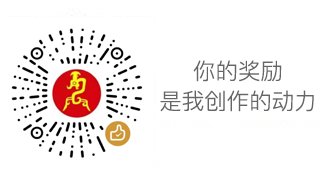 微信/支付宝扫一扫打赏
微信/支付宝扫一扫打赏
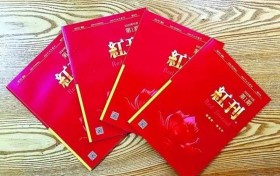
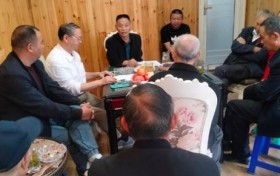



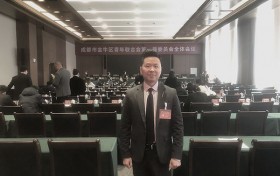

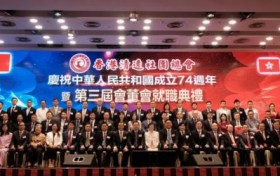

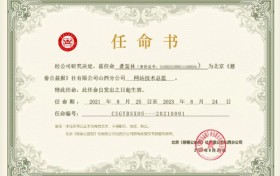


0 条评论